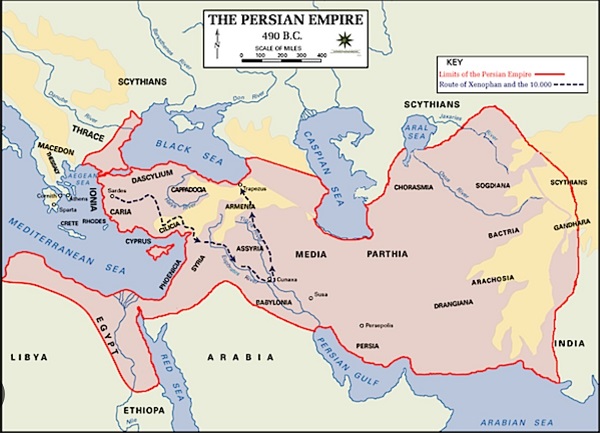Purim, the Feast of Lots, is typically celebrated in our modern day in a rowdy, boisterous manner. Israelis celebrate countless Purim street parties with carnival atmospheres in almost every city, town, and village across Israel. Many partygoers often hop from club to club in festive costumes to drink the night away. And since Shushan Purim means that Purim is celebrated in Jerusalem a day after the rest of the country, this means that the avid party-goers can celebrate in Tel Aviv one night and then travel to Jerusalem to continue the party the next day also!
Apart from bright costumes and boisterous celebrating, Purim features the public reading/chanting of the Megillah (Book of Esther) on the eve of Purim and again the next morning. Whenever the listeners hear Haman’s name, the villain of the story, they make noise to drown out his name. Purim also features eating hamantaschen (Haman ears) triangular cookies. Purim combines history, faith, social customs, family activities, and just plain fun into one event. Perhaps we can think of Purim as a combining of Halloween (with the colorful costumes) and Christmas (based off a Bible story) into one super-sized holiday.


The Historic Reason for Purim keeps rearing its head – Why?
But having now witnessed the October 7, 2023 atrocities, this may give reason to pause the celebrating to ask:
Why does the threat to Jews remembered in Purim keep on re-appearing to attempt their destruction?
The Threat in Esther Summarized

The events of Esther occurred approximately 480 BCE. Though a fairly short book, Esther records how Haman plotted the annihilation of all Jews within the vast Persian Empire. Haman did so because of his hatred for Mordecai who would not bow before him. Through flattery Haman succeeded in persuading Emperor Xerxes (aka Ahasuerus) to issue a decree permitting the destruction of all Jews. However Esther, the beautiful queen and wife of Xerxes, was also the cousin of Mordecai. Mordecai persuaded her to advocate for the Jews to the Emperor. Her courageous intervention resulted in the impaling of Haman. She also obtained the granting of rights to the Jews to organize and defend themselves. The Jews were saved from annihilation.

Subsequent Threats
But think through history since that time. Approximately 170 BCE the Greek Seleucid Antiochus also tried to exterminate the Jews (resulting in another festival, Hanukkah). Subsequently, the Romans tried it twice, in 70 CE and again in the Bar Kochba revolt of 132 CE. Then under the Byzantines, Muslims, Crusaders, Mamluks, and the Ottomans Jews constantly faced enemies bent upon their destruction.
In the modern era this threat peaked in the Holocaust. The founding of the state of Israel, was in part to ensure this would never happen again. But it did not cause anti-Semitic forces to abate. The wars waged against Israel by the surrounding nations in 1948, 1956, 1967 and 1973 were attempts to exterminate her. The Hamas brutality of October 7, 2023 will probably not be the last attempt either. In fact, Zechariah’s prophecy combined with the High Holidays (explored here) suggests that these events will only increase.
Global Agitation post October 7
Somehow, surviving and sometimes even thriving in the face of constantly re-appearing anti-semitic hatred seems to be a mainstay of Jewish history. One wonders how the Israeli-Hamas war ongoing in 2024 generates such worldwide attention. It ignites such extreme anti-Israeli views, not just among Muslims, but all over the world. Why would South Africa bring this to the ICC while simultaneously a civil war destroys eastern DRC, killing just as many people? Yet this hardly gets any international attention. Sudan is descending into anarchy with the internet cut as millions face starvation and their hospitals are shelled. Why does no one protest that war or summon the warring sides to the Hague?
Armed clashes are tearing Myanmar apart. Why does the Netherlands Supreme Court censure spare parts for the F-35 against Israel when there are so many other conflicts fueled by weapons of all sorts? Why is no one protesting the expulsion of Afghanis by Pakistan back to the Taliban?
What makes the Jewish situation always stand out from the others? It is difficult to locate an answer in an aspect of society, religion, politics. This is so because hatred against Jews has spanned all societies, religions and political situations over thousands of years.
The Torah’s Point-of-View
Perhaps the Torah provides some foundational insight.
In the very beginning, in Genesis 3, G-d lays out the framework for Jewish history when He confronts the serpent in the Garden, predicting enmity between the Woman and the Serpent. The Woman is Israel. This enmity would transcend all societies, empires, cultures and religions. Then, when G-d blessed Abraham and stated that He would ‘bless those who bless you and curse those who curse you’ G-d implied an ongoing conflict of blessing and curse. Finally, in the curses and blessing that Moses gave at the close of the Torah, a blueprint for Jewish history lays out what has proved impressively accurate. These three prophetic glimpses into Jewish history from far back in time imply that the root of the Jewish experience is a spiritual conflict, one simply not of human origin.
Filled out further by the final Revelation in Brit Chadasha
The final book in the Brit Chadasha picks up from the foundation laid in the Torah. Evoking that image from Genesis 3 of the Woman (Israel), her Seed (Messiah) and the Serpent (Satan) it foretells:
Now a great sign was seen in heaven — a woman clothed with the sun, under her feet the moon, and on her head a crown of twelve stars. 2 She was pregnant and about to give birth, and she screamed in the agony of labor.
3 Another sign was seen in heaven there was a great red dragon with seven heads and ten horns, and on his heads were seven royal crowns. 4 Its tail swept a third of the stars out of heaven and threw them down to the earth. It stood in front of the woman about to give birth, so that it might devour the child the moment it was born.
5 She gave birth to a son, a male child, the one who will rule all the nations with a staff of iron. But her child was snatched up to God and his throne; 6 and she fled into the desert, where she has a place prepared by God so that she can be taken care of for 1,260 days.
7 Next there was a battle in heaven — Mikha’el and his angels fought against the dragon, and the dragon and his angels fought back. 8 But it was not strong enough to win, so that there was no longer any place for them in heaven. 9 The great dragon was thrown out, that ancient serpent, also known as the Devil and Satan [the Adversary], the deceiver of the whole world. He was hurled down to the earth, and his angels were hurled down with him.
10 Then I heard a loud voice in heaven saying,
“Now have come God’s victory, power and kingship,
and the authority of his Messiah;
because the Accuser of our brothers,
who accuses them day and night before God,
has been thrown out!
11 “They defeated him because of the Lamb’s blood
and because of the message of their witness.
Even when facing death
they did not cling to life.
12 “Therefore, rejoice, heaven and you who live there!
But woe to you, land and sea,
for the Adversary has come down to you,
and he is very angry, because he knows that his time is short!”
13 When the dragon saw that he had been hurled down to the earth, he went in pursuit of the woman who had given birth to the male child. 14 But the woman was given the two wings of the great eagle, so that she could fly to her place in the desert, where she is taken care of for a season and two seasons and half a season, away from the serpent’s presence. 15 The serpent spewed water like a river out of its mouth after the woman, in order to sweep her away in the flood; 16 but the land came to her rescue — it opened its mouth and swallowed up the river which the dragon had spewed out of its mouth. 17 The dragon was infuriated over the woman and went off to fight the rest of her children, those who obey God’s commands and bear witness to Yeshua.
Revelation 12: 1-17
Reflections
Thinking of Jew-hatred as fundamentally a result of a spiritual conflict is probably foreign to our modern ways of thinking. However, no social, human-religious, economic or racial theories can explain the ongoing hatred that spans all categories of human activity. In this viewpoint, that conflict reared its head in the characters and events of Esther that we remember in Purim. To explore further the thesis that Israel finds itself in the middle of a cosmic conflict consider: